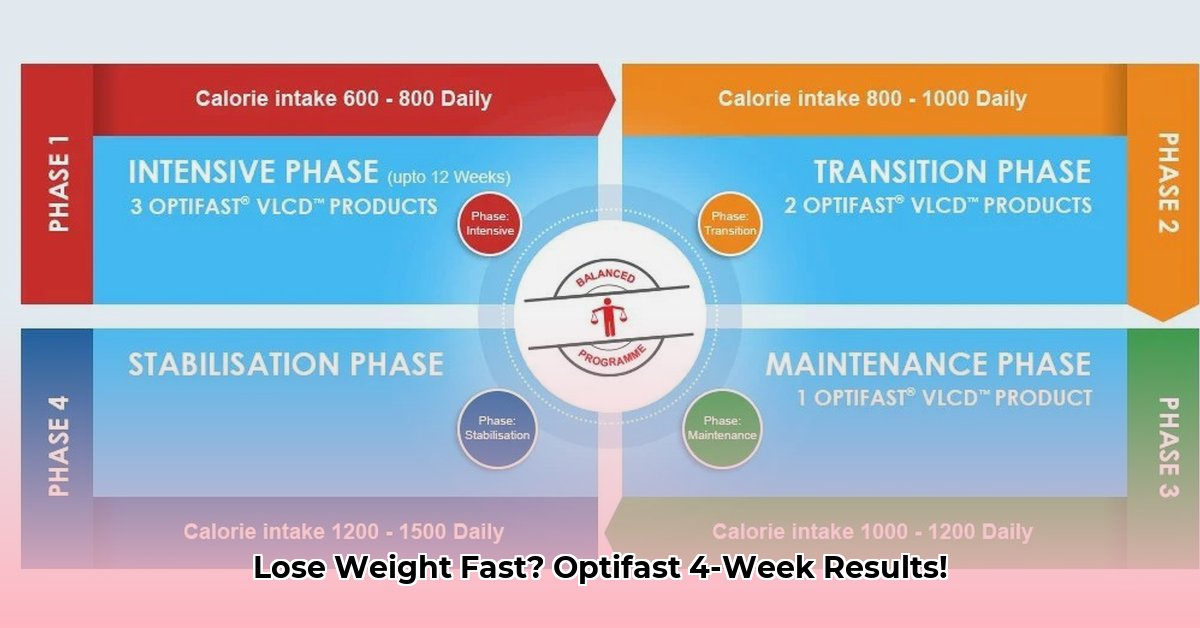
Want to lose weight quickly? Optifast, a medically supervised program using meal replacements, promises significant results in just four weeks. But is it right for you? This review and guide will help you decide, exploring the benefits, risks, and long-term implications before you begin. We’ll cover everything from potential side effects and cost considerations to strategies for maintaining your weight loss after the program ends.
How Optifast Works: Meal Replacements and Medical Supervision
Optifast replaces most meals with low-calorie shakes and soups. This calorie deficit triggers weight loss. Crucially, it's medically supervised. Regular checkups with a doctor or registered dietitian monitor your progress, address concerns, and ensure your health.
The Benefits of Optifast: Rapid Weight Loss and Expert Guidance
- Significant Weight Loss: Studies suggest Optifast can lead to substantial weight reduction in a short period. The exact amount varies based on individual factors.
- Medical Monitoring: The program’s rigorous medical supervision provides a safety net, detecting potential health problems early. This reduces risks associated with rapid weight loss.
The Risks and Potential Side Effects of Optifast: A Balanced Perspective
While promising, Optifast has potential drawbacks:
- Nutrient Deficiencies: Very low-calorie diets might lead to nutritional imbalances if not carefully monitored and supplemented.
- Side Effects: Nausea, digestive upset (bloating, gas), and constipation are relatively common with very low-calorie diets.
- Sustainability Challenges: Maintaining weight loss after Optifast requires significant lifestyle changes. The program itself is not a long-term solution.
Optifast Cost: A Realistic Financial Assessment
Optifast isn't inexpensive. Costs include meal replacements, regular doctor visits, and potential counseling. Factor in these expenses before starting. Insurance coverage may vary, so it's essential to check your plan.
Is Optifast Right for You? A Decision-Making Framework
Before starting, ask yourself:
- Have you consulted your doctor? This is paramount to assess your suitability and discuss potential risks.
- Are you prepared for potential side effects? Understand that some discomfort is possible.
- Can you afford the program? Factor in all associated costs.
- Are you committed to long-term lifestyle changes? Weight loss is only the first step.
Getting Started with Optifast: A Practical Guide
If you and your doctor deem Optifast suitable:
- Schedule a doctor's appointment. This is your starting point.
- Understand the program guidelines. Familiarize yourself with the meal plan and support system.
- Prepare mentally and physically. This is a demanding journey; having a support system is helpful.
- Gather necessary supplies. Ensure you have all the meal replacements and any recommended supplements.
Maintaining Weight Loss After Optifast: A Long-Term Strategy
Long-term success depends on creating sustainable lifestyle habits:
- Gradual Dietary Transition: Slowly reintroduce regular foods into your diet, focusing on whole, unprocessed options.
- Regular Exercise: Incorporate physical activity into your routine.
- Behavioral Therapy (if needed): Address any underlying emotional eating patterns.
Conclusion: A Balanced Perspective on Optifast
Optifast offers rapid weight loss, but its success hinges on medical supervision and a commitment to long-term lifestyle changes. Weigh the benefits and risks carefully, and always consult your doctor. Remember, sustainable weight management is a journey, not a sprint.